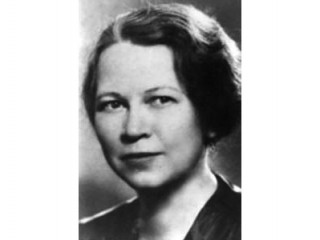
Edith H. Quimby biography
Date of birth : 1891-07-10
Date of death : 1982-10-11
Birthplace : Rockford, Illinois, U.S.
Nationality : American
Category : Science and Technology
Last modified : 2011-02-25
Credited as : Scientist and radiologist, diagnostics with X rays, radioactive material
A pioneer in the field of radiology, Edith H. Quimby helped develop diagnostic and therapeutic applications for X rays, radium, and radioactive isotopes when the science of radiology was still in its infancy. Her research in measuring the penetration of radiation enabled physicians to deter mine the exact dose needed with the fewest side effects.
In addition to her accomplishments in the field of radiology, Edith H. Quimby worked to protect those handling radioactive material from its harmful effects. While a radiology professor at Columbia University, she established a research laboratory to study the medical uses of radioactive isotopes, including their application in cancer diagnosis and treatments. In recognition of her contributions to the field, the Radiological Society of North America awarded her a gold medal for work which "placed every radiologist in her debt."
Quimby was born on July 10, 1891, in Rockford, Illinois, to Arthur S. Hinkley, an architect and farmer, and Harriet Hinkley (whose maiden name was also Hinkley). The family—Quimby was one of three children—moved to several different states during Quimby's childhood. She graduated from high school in Boise, Idaho, and went on a full tuition scholarship to Whitman College in Walla Walla, Washington, where she majored in physics and mathematics. Two of her teachers at Whitman, B. H. Brown and Walter Bratton, were major influences in directing her toward a career in scientific research. After graduating in 1912, Quimby taught high school science in Nyssa, Oregon, and then went to the University of California in 1914 to accept a fellowship in physics. While in the graduate program there, she married fellow physics student Shirley L. Quimby. She earned her M.A. in 1915 and returned to teaching high school science, this time in Antioch, California. In 1919, when her husband moved to New York to teach physics at Columbia University, she went with him. The move to New York was a pivotal point in Quimby's career, as she began working under Dr. Gioacchino Failla, chief physicist at the newly created New York City Memorial Hospital for Cancer and Allied Diseases. This began a scientific association that was to last forty years.
Quimby began studying the medical uses of X rays and radium, especially in treating tumors. At that time, physicians and researchers knew extremely little about this area; before Quimby's research, each doctor had to determine on a case-by-case basis how much radiation each patient needed for treatment. Quimby focused her attention on measuring the penetration of radiation so that radiotherapy doses could be more exact and side effects minimized. After several years of research, she successfully determined the number of roentgens (a now obsolete unit of radiation dosage) per minute emitted in the air, on the skin, and in the body. Her research on the effects of radiation on the skin was especially noteworthy to the scientific community, and her study was frequently quoted in the professional literature for many years.
From 1920 to 1940, Quimby conducted numerous experiments to examine various properties of radium and X rays. During this period she wrote dozens of articles for scientific journals, describing the results of her research and listing standards of measurement. In 1940 Quimby was the first woman to receive the Janeway Medal of the American Radium Society in recognition of her achievements in the field.
From 1941 to 1942, Quimby taught radiology courses at Cornell University Medical College. The following year she became associate professor of radiology at Columbia University College of Physicians and Surgeons, where she taught radiologic physics. While at Columbia, she and Failla founded the Radiological Research Laboratory. There they studied the medical uses of radioactive isotopes in cooperation with members of Columbia's medical departments. They focused their research on the application of radioactive isotopes (different forms of the same element whose unstable nuclei emit alpha, beta, or gamma rays) in treating thyroid disease, and for circulation studies and diagnosis of brain tumors. These inquiries made Quimby a pioneer in the field of nuclear medicine.
Quimby participated in other aspects of radiology research as well. She researched the use of synthetically produced radioactive sodium in medical research, and devoted considerable efforts to investigating ways to protect those handling radioactive substances from the harmful effects of exposure. Very early on, Quimby foresaw the potential for increased diagnostic and therapeutic use of atomic energy in medicine through radioactive isotopes.
In addition to her research and lecturing, Quimby worked on the Manhattan Project (which developed the atom bomb). She also worked for the Atomic Energy Commission, acted as a consultant on radiation therapy to the United States Veterans Administration, served as an examiner for the American Board of Radiology, and headed a scientific committee of the National Council on Radiation Protection and Measurements. A prolific writer, Quimby published a considerable amount of literature on various aspects of the medical uses of X rays, radium, and radioactive isotopes. She also coauthored a widely respected book entitled Physical Foundations of Radiology.
After her official retirement in 1960 as professor emeritus of radiology, Quimby continued to write, lecture, and consult well into the 1970s. She was a member of several radiology societies, including the American Radium Society, for which she served as vice president. In her nonprofessional life, Quimby was a member of the League of Women Voters.
On Quimby's death on October 11, 1982, at the age of ninety-one, Harald Rossi of Columbia University wrote in Physics Today that "all too often the creative achievements of scientific pioneers are overshadowed by further developments made by others or simply become anonymous components of accepted practice. Fortunately, Quimby's exceptional service to radiological physics was widely recognized."
















